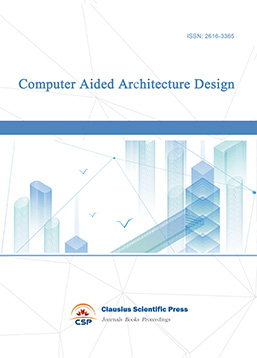Assessment of damage on Reinforced Concrete Frame Structures under Seismic Aftershock in Kuwait
DOI: 10.23977/jceup.2019.11001 | Downloads: 54 | Views: 4128
Author(s)
Bader A. Abdullah 1, Khaled Sh Alajmi 1
Affiliation(s)
1 Construction Training Institute -The Public Authority for Applied Education & Training (PAAET)
Corresponding Author
Bader A. AbdullahABSTRACT
With the accelerated process of urbanization of Kuwait, urban high-rise buildings are getting more and higher and closer between each other. The risk due to the collapse of buildings under earthquake is more and more great. Due to the unpredictability of earthquake, as well as the discreteness of seismic waves, the preferred method used by engineers in the structural design is to enhance the ability for reducing earthquake damage. This paper used data from the Kuwait National Seismic Network (KNSN) to estimate the seismic response of an RCC structure in Kuwait In the codes for seismic design of different countries, both the safety and the economy of the structure are taken into account. In addition to the elastic analysis under "small earthquake", the elastic-plastic analysis under "strong earthquake" is necessary. When the response of the structure under strong earthquake is beyond the scope of the elasticity, the structure behavior will be changed from elastic status to elastic-plastic status. FEA analysis has proved it importance in doing such non-linear implicit material analysis. This paper studied the behavior of a three storey building subjected to Dynamic loads in Elastic-Plastic Region of the material using data available on Kuwait National Seismic Network (KNSN) websites.
KEYWORDS
Kuwait National Seismic Network (KNSN), Non-linear material, Elasto-Plastic behavior, Dynamic implicit, FEA and EarthquakeCITE THIS PAPER
Bader A. Abdullah, Khaled Sh Alajmi, Assessment of damage on Reinforced Concrete Frame Structures under Seismic Aftershock in Kuwait, Journal of Civil Engineering and Urban Planning (2019) Vol. 1: 1-10. DOI: http://dx.doi.org/10.23977/jceup.2019.11001.
REFERENCES
[1] ArRajehi, A., McClusky, S., Reilinger, R., Daoud, M., Alchalbi, A., Ergintav, S., ... & Haileab, B. (2010). Geodetic constraints on present‐day motion of the Arabian Plate: Implications for Red Sea and Gulf of Aden rifting. Tectonics, 29(3).
[2] Rodgers, A., Harris, D., Ruppert, S., Lewis, J. P., O'Boyle, J., Pasyanos, M., ... & Al-Gazo, A. (2003). A broadband seismic deployment in Jordan. Seismological Research Letters, 74(4), 374-381.
[3] Samanta, A. K., & Tripathi, S. (2009). Effect of in-plane forces in beam-column junction of RC substitute frame in the linear regime. ARPN Journal of Engineering and Applied Sciences, 4(10), 55-62.
[4] Jankowiak, T., & Lodygowski, T. (2005). Identification of parameters of concrete damage plasticity constitutive model. Foundations of civil and environmental engineering, 6(1), 53-69.
[5] Chaudhari, S. V., & Chakrabarti, M. A. (2012). Modeling of concrete for nonlinear analysis using finite element code ABAQUS. International Journal of Computer Applications, 44(7), 14-18.
[6] Zaicenco, A., Lungu, D., Alkaz, V., & Cornea, T. (1999). Classification and evaluation of Vrancea earthquake records from republic of Moldova. In Vrancea Earthquakes: Tectonics, Hazard and Risk Mitigation (pp. 67-76). Springer, Dordrecht.
[7] DeMets, C., Gordon, R. G., Argus, D. F., & Stein, S. (1990). Current plate motions. Geophysical journal international, 101(2), 425-478.
| Downloads: | 3762 |
|---|---|
| Visits: | 106768 |
Sponsors, Associates, and Links
-
Journal of Sustainable Development and Green Buildings

-
Landscape and Urban Horticulture

-
Bridge and Structural Engineering

-
Soil Mechanics and Geotechnical Engineering

-
Journal of Municipal Engineering

-
Heating, Ventilation and Air Conditioning

-
Indoor Air Quality and Climate

-
Computer Aided Architecture Design


 Download as PDF
Download as PDF